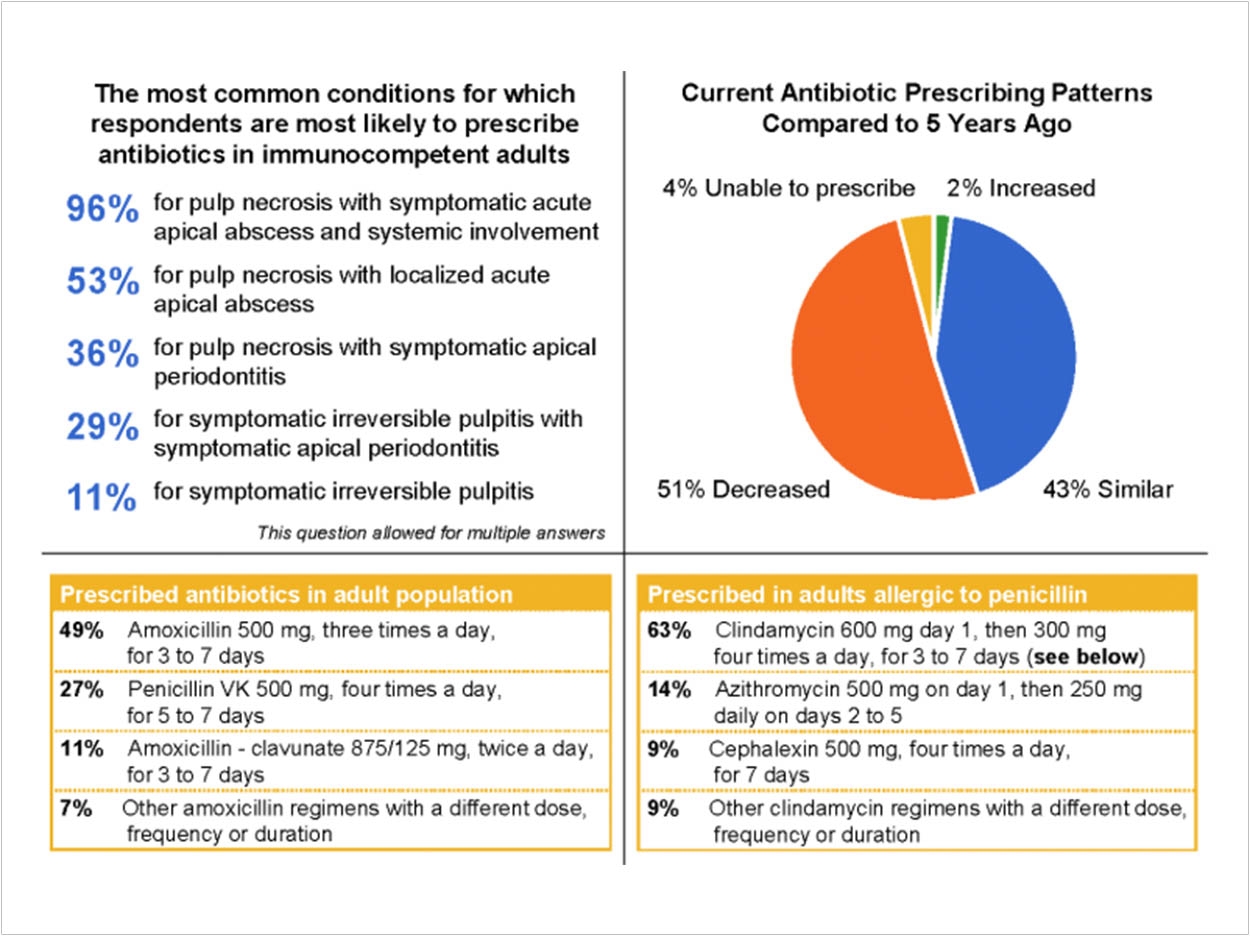
As antimicrobial resistance becomes a greater global concern, dentists are adjusting the way they prescribe antibiotics. The ADA Clinical Evaluators (ACE) Panel, a network of practicing ADA member dentists who share their opinions on topics and products, recently reported which clinical interventions they believe require adjunct antimicrobial treatment, their preferred antibiotic to use in immunocompetent adults, and more.
According to the ACE Panel survey of 391 dentists, when it comes to immunocompetent adults:
- 96% of respondents prescribe antibiotics for pulp necrosis with symptomatic acute apical abscess and systemic involvement.
- 53% of respondents prescribe antibiotics for pulp necrosis with localized acute apical abscess.
- 36% of respondents prescribe antibiotics for pulp necrosis with symptomatic apical periodontitis.
- 29% of respondents prescribe antibiotics for irreversible pulpitis with symptomatic apical periodontitis.
- 11% of respondents prescribe antibiotics for irreversible pulpitis.
The ACE Panel notes that the key to successfully managing an infection of endodontic origin is proper root canal debridement accompanied by disinfection and abscess drainage when swelling is present. The organization further concludes that there are three reasons why systemic antibiotics should be reserved for immunocompetent adults to pulp necrosis associated with acute apical abscess and systemic involvement:
- Necrotic tissue usually ceases to receive blood supply, so systemic antibiotics might not reach the site of infection, making debridement and drainage important components of treatment .
- Frequent and unnecessary antibiotic use has been shown to increase multidrug-resistant organisms, affecting 2 million people yearly and resulting in 23,000 deaths.
- Long-term antibiotic use is associated with adverse drug reactions. In particular, Clindamycin can cause Clostridium difficile infection, which affects 453,000 people yearly and results in 29,000 deaths.
Related Articles
A Short Case Study: The Necrotic No. 2 Tooth
A Short Case Study: Separation Anxiety in Endodontics?
Managing Endodontic Emergencies


